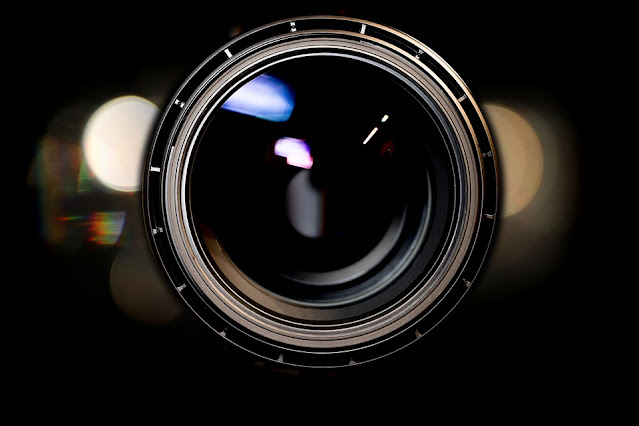The Journey of Light: Understanding Camera Lenses
 |
| Camera Lenses |
Camera lenses play a vital role in photography, allowing
us to capture beautiful images that we can cherish for years to come. However,
for many amateur photographers, the inner workings of a lens remain somewhat of
a mystery. In this article, we will break down the key components and
technologies that make up modern lenses, helping explain how they guide light
and impact the images we create.
A Brief History
The development of camera lenses dates back to the early years of photography
in the 1800s. Some of the earliest photographic processes relied on simple
lenses to focus light onto light-sensitive materials like silver halide
crystals. Over time, advances in glass manufacturing and optics led to improved
lens designs. In the late 19th century, lens mount systems were introduced
allowing photographers to change lenses on their cameras. Legendary lens makers
like Zeiss, Leica and Canon helped drive innovation in glass formulization,
multi-element lens designs and coating technologies over the 20th century.
Today, camera lenses have become extremely sophisticated optical instruments
capable of incredible sharpness and resolving power.
Lens Elements and Groups
At the most basic level, a camera lens is made up of multiple glass lens
elements carefully arranged in groups. Single element lenses suffered from optical
aberrations like spherical aberration which blurred image quality. By combining
positive and negative lens elements in calculated ways, multiple element lens
designs counteract these aberrations through their opposing optical powers.
Modern lenses contain up to 20 elements working in complex groups to deliver
the best corrections. Additional elements also allow for complex lens designs
with large maximum apertures and extensive zoom or focal ranges. Each element
must be ground and polished to precise optical specifications to function as
designed.
The Front Group and Rear Group
Most lenses separate their elements into two main groups - the front group
nearest the scene and rear group closest to the camera sensor or film plane.
The front group collects incoming rays of light, controlling focal length and
zoom range. During zooming, this group moves in or out smoothly. Behind this is
the rear group, which fine tunes the image formation through additional element
arrangements. The rear group remains fixed on fixed focal length lenses but
moves in tandem with the front group on zoom lenses. Working together, these
two lens groups direct light rays accurately onto the imaging plane.
Lens Coatings and Camera Technology
While early lenses used untreated glass, modern lens coating technologies play
a key role in image quality. Lens coatings are ultra-thin layers of compounds
like magnesium fluoride deposited onto glass surfaces through vacuum
deposition. Modern lenses employ multiple-coat designs to reduce glare and
reflections. Anti-reflection coatings increase light transmission for higher
sharpness while lowering flare. Additionally, new lens materials like fluorite
and XR (extra-refractive) glass types extend performance boundaries with less
chromatic aberration than traditional glasses. When coupled with
high-resolution camera sensors, today's advanced optics capture stunning
sharpness from center to edge.
Understanding Focal Lengths and
Apertures
Two crucial optical specifications define a lens' capabilities - focal length
and maximum aperture. Focal length directly impacts the field of view and zoom
range, described in millimeters (eg. 70-200mm). Wider angle lenses like 28mm
capture broader landscapes while longer lenses like 200mm draw subjects closer.
Aperture is the size of the diaphragm opening measured in f-stops like f/2.8 or
f/4. Larger maximum apertures admit more light for low light shooting with
shallower depth of field backgrounds. Yet quality construction is needed to
ensure these wide apertures are also sharp across the frame. Together, these
quantifiable factors determine the lens character for any photography
application.
Specialized Lens Types and Technologies
Beyond conventional zoom lenses, Camera
lens there exists a diverse ecosystem of specialty prime, macro,
telephoto and wide-angle lenses for photographers. Wide-aperture primes between
50mm and 135mm maximize creative control. Extreme telephoto lenses magnify
distant objects while supersized tele primes isolate subjects with blurred
backgrounds. Macro lenses achieve life-size magnification for close-up living
world images. Meanwhile, circular fisheye and ultra-wide lenses open new
perspectives by capturing 180° or 220° panoramic viewpoints. Emerging imaging
technologies like 360° VR lenses further expand horizons. The right lens
depends completely on the images one wishes to create.
Developing Your Lens Skills
With an understanding of basic lens optics and specifications, photographers
can begin exploring the powerful creative tools found within lens designs. By
learning each lens' characteristics, one can better match lenses to shooting
situations for optimum results. Take test shots to gain experience in depth of
field control, perspective distortion effects or zoom framing techniques. As skills
develop further, it becomes easier to visualize scenes before capturing using
particular focal lengths or apertures. Proper lens understanding also serves
photographers well when sharpening post-processing techniques or assessing
image quality. Over time, lenses become intuitive creative extensions of the
photographic eye.
In summary, modern camera lenses have come a long way from early photographic
days utilizing seemingly simple single element optics. Today's high precision
lenses rely on cutting-edge multi-group designs, materials and coating
technologies to surpass resolution barriers and push creative boundaries. With
study and experience, photographers can tap into their lenses' full optical
powers to consistently achieve sharper and more impactful results suited to
myriad subjects and styles. The journey inward of a lens truly reveals much
about how light translates into the visual arts.
Get
more insights on- Camera
Lens



Comments
Post a Comment